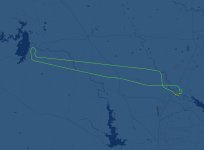The 6 was Vans last “hand designed and manufactured” kit. The 7 wasn’t a redesigned 6, it is a whole different product, designed to take advantage of the automated equipment Vans was using for the 8 and subsequent models. Vans matched some of the 6 specs, motor mount, firewall profile, gear, etc… so there was some commonality, thankfully.
Building any airplane is a daunting project. However the early RV’s, 3,4,6 required a bit more builder engagement. Jigging, laying out rivet lines, locating ribs, laying up the spar, etc…. As a result, you can get a wide variance in build quality. That said, I have seen many 7’s that missed just short of the mark with the little things, like edge finishing, FWF installs, etc…. They seemed to attract some builders who thought they could just throw them together and have an airplane.
Most 6 owners wouldn’t consider trading for a 7. We are jealous of what we have. I like the slightly sportier feel of the shorter wing. I even like the quirky tail wag cruising in turbulence. It would be nice to have the higher gross, VNE, fuel, etc…. but that has never affected how I use my airplane. As Randall put it, small incremental improvements between the 7 and 6. I love them both.
I would probably be buried in my 6 when I pass but that would be a waste of a great airplane.





